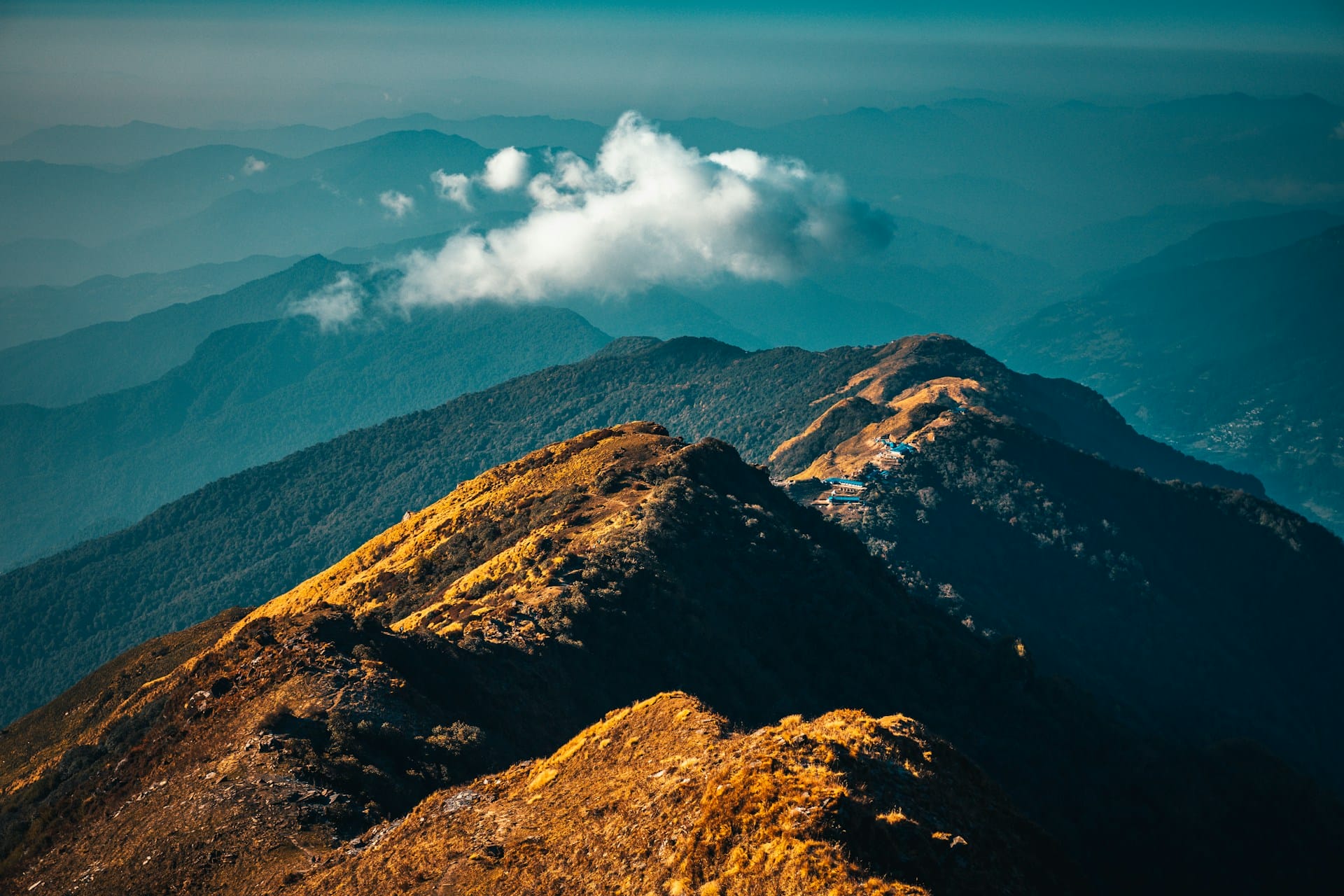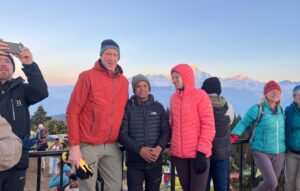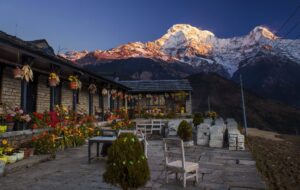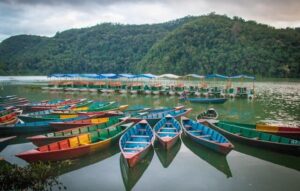Nestled in the lap of the mighty Annapurna range, the Mardi Himal Trek offers adventurers a chance to immerse themselves in the pristine beauty of the Himalayas. Kalpa Holidays Company invites you to embark on this exhilarating journey, where every step is a testament to your resilience and determination. In this comprehensive guide, we delve into the intricacies of the Mardi Himal trek, exploring its challenges, rewards, and the sheer magnificence that awaits those who dare to venture into its midst.
Understanding the difficulty level of any trek is crucial, especially for those with limited trekking experience. It helps in preparing adequately and ensuring that the adventure is both enjoyable and safe. The objective of this blog post is to provide a comprehensive guide on the difficulty of the Mardi Himal Trek, covering all aspects that might affect a trekker’s experience.
Physical Demands for Mardi Himal Trek
Daily Hiking Distances
On average, trekkers cover about 10-15 kilometers per day. The distances might seem manageable, but the steep ascents and descents can be challenging. Most days start early to take advantage of the cooler morning temperatures and to ensure arrival at the next stop well before dusk.
Altitude Challenges
The trek starts at around 800 meters in Pokhara and ascends to over 4,500 meters at the Mardi Himal Base Camp. Altitude sickness is a significant concern, as the body needs time to acclimatize to lower oxygen levels. Symptoms can include headaches, nausea, dizziness, and shortness of breath. Gradual ascent and acclimatization days are crucial to minimize these risks.
Terrain Variations
The terrain varies from dense forests and steep rocky paths to open meadows and snow-covered trails. The constant change in terrain demands good balance and strength. Proper footwear with good ankle support and traction is essential to navigate the varied landscape safely.
Required Fitness Level
A reasonable level of fitness is necessary for this trek. In the months leading up to the trek, regular cardiovascular exercises, strength training, and endurance-building activities are recommended. This preparation helps handle long days of walking and the physical strain of climbing and descending steep trails.
Mental Challenges duirng trekking in Mardi Himal
Motivation and Perseverance
Mental fortitude is as important as physical fitness. The trek can be long and tiring, and maintaining motivation is key. Setting small, achievable goals each day and keeping a positive mindset can help push through tough times.
Coping with Isolation
While the trail is popular, there are stretches where trekkers might feel isolated, especially in the higher altitudes where settlements are sparse. Being mentally prepared for solitude and finding ways to enjoy the peace of nature can enhance the experience.
Overcoming Fatigue
Fatigue can set in after several days of trekking. Adequate rest, nutrition, and hydration are vital in combating tiredness. Listening to your body and taking breaks when necessary helps maintain energy levels.
Strategies to Stay Mentally Strong
Techniques such as mindfulness, meditation, and positive self-talk can be beneficial. Engaging with fellow trekkers, sharing stories, and supporting each other contribute to a positive experience.
Technical Skills Required for Mardi Himal Trek
Basic Trekking Skills
Although the Mardi Himal Trek does not require advanced mountaineering skills, basic trekking skills are necessary. Knowing how to pace yourself, maintain balance, and use trekking poles effectively can make a significant difference.
Navigation and Map Reading
While the trail is well-marked, having basic navigation skills is advantageous. Understanding how to read a map and use a compass or GPS device ensures you stay on the right path and can find your way if you accidentally stray off course.
Handling Trekking Gear
Knowing how to pack and adjust your backpack properly, use your trekking poles, and manage your clothing layers are essential skills. These abilities enhance comfort and efficiency on the trail.
Importance of a Guide
Hiring a guide can be incredibly beneficial, especially for those new to trekking in Nepal. A knowledgeable guide provides insights into the local culture, history, and environment and can help with navigation, safety, and logistical arrangements.
Weather and Seasonal Factors in Mardi Himal Trek
Best Times for Mardi Himal Trek
The ideal times to trek are during the pre-monsoon (March to May) and post-monsoon (September to November) seasons. During these periods, the weather is relatively stable, and the clear skies offer spectacular mountain views.
Weather Patterns and Their Impact in Mardi Himal Trek
Weather in the mountains can be unpredictable. Trekkers may experience sunny days, rain, and even snow in a single day. Understanding these patterns helps in planning and preparing for varied conditions.
Dealing with Unexpected Weather Changes
Being prepared for unexpected weather changes is crucial. Carrying appropriate gear, such as waterproof jackets, warm layers, and sun protection, ensures you can comfortably handle sudden shifts in weather.
Clothing and Gear Recommendations
Layering is key to managing varying temperatures. Essential items include moisture-wicking base layers, insulating mid-layers, waterproof outer layers, sturdy hiking boots, and accessories like hats, gloves, and sunglasses.
Accommodations and Facilities available in Mardi Himal Trek
Types of Accommodations Available
Accommodation ranges from basic tea houses and lodges to more comfortable guesthouses. These facilities offer a bed, meals, and a communal area for socializing. Understanding the available options helps in setting expectations and planning rest stops.
Food and Water Availability during Mardi Himal Trek
Tea houses provide simple, hearty meals, often featuring local ingredients. Dal Bhat (rice and lentils) is a staple. Carrying water purification tablets or a filter is essential, as bottled water can be expensive and environmentally unfriendly.
Sanitation and Hygiene
Sanitation facilities can be basic, with shared toilets and limited shower options. Wet wipes, hand sanitizer, and biodegradable soap are useful for maintaining personal hygiene.
Dealing with Limited Facilities
Being prepared for limited facilities means carrying essential items and being adaptable. This preparation ensures comfort and health throughout the trek.
Health and Safety Considerations in Mardi Himal Trek
Altitude Sickness and Prevention
It’s important to ascend gradually to prevent altitude sickness and allow time for acclimatization. Hydration, avoiding alcohol, and recognizing early symptoms are crucial preventive measures.
Emergency Procedures
Knowing emergency procedures, including the location of the nearest medical facilities and contact information for rescue services, is vital. Guides are typically trained in first aid and emergency response.
Health Precautions and Vaccinations
Vaccinations for hepatitis A and B, typhoid, and tetanus are recommended. Carrying a basic first aid kit, including medications for common ailments, ensures you’re prepared for minor health issues.
Importance of Travel Insurance
Comprehensive travel insurance that covers high-altitude trekking, medical emergencies, and evacuation is essential. This insurance provides peace of mind and financial protection in unexpected incidents.
Preparation and Planning for Mardi Himal Trek
Essential Gear Checklist
- A well-thought-out gear checklist includes:
- Sturdy trekking boots
- Multiple clothing layers
- Waterproof jacket and pants
- Trekking poles
- Sleeping bag
- First aid kit
- Map and compass/GPS
- Water purification tablets
- Snacks and energy bars
- Training and Conditioning
A structured training plan focusing on cardiovascular fitness, strength, and endurance is essential. Regular hiking, stair climbing, and weight training prepare the body for the demands of the trek.
Securing Permits and Documentation for the Mardi Himal Trek
Trekkers need an Annapurna Conservation Area Permit (ACAP) and a TIMS (Trekkers’ Information Management System) card. Securing these permits in advance ensures smooth entry into the trekking region. To learn more about permits for different trekking, you can check the official Nepal Tourism Board.
Budgeting for the Mardi Himal Trek Trek
Budget considerations include transportation, accommodation, meals, permits, gear, and guide/porter fees. Planning and budgeting help manage expenses and avoid surprises. For different packages, check out our Annapurna Region Trekking.
Cultural and Scenic Highlights of Mardi Himal Trek
Major Landmarks and Viewpoints
Key landmarks include Mardi Himal Base Camp, Low Camp, High Camp, and the stunning viewpoints along the ridge. Each offers unique perspectives of the Annapurna Range and surrounding landscapes.
Cultural Experiences Along the Mardi Himal Trek
The trek passes through traditional Gurung and Magar villages, offering insights into local lifestyles, traditions, and hospitality. Engaging with locals and experiencing their culture adds richness to the journey.
Flora and Fauna of Mardi Himal Trek
The region is rich in biodiversity, with rhododendron forests, alpine meadows, and diverse wildlife. Trekkers might encounter birds, monkeys, and, if lucky, even a glimpse of the elusive snow leopard.
Photography Tips
Capturing the beauty of the trek requires a good camera and an understanding of lighting conditions. Early mornings and late afternoons provide the best light for photography. Including people and cultural elements in shots adds depth and context.
Conclusion
With its diverse landscapes and cultural richness, the Mardi Himal Trek offers a fulfilling adventure for trekkers. While challenging, the trek is manageable with proper preparation and a positive mindset. Embracing the physical and mental demands enhances the overall experience, making the journey as rewarding as the destination.







0 Comments